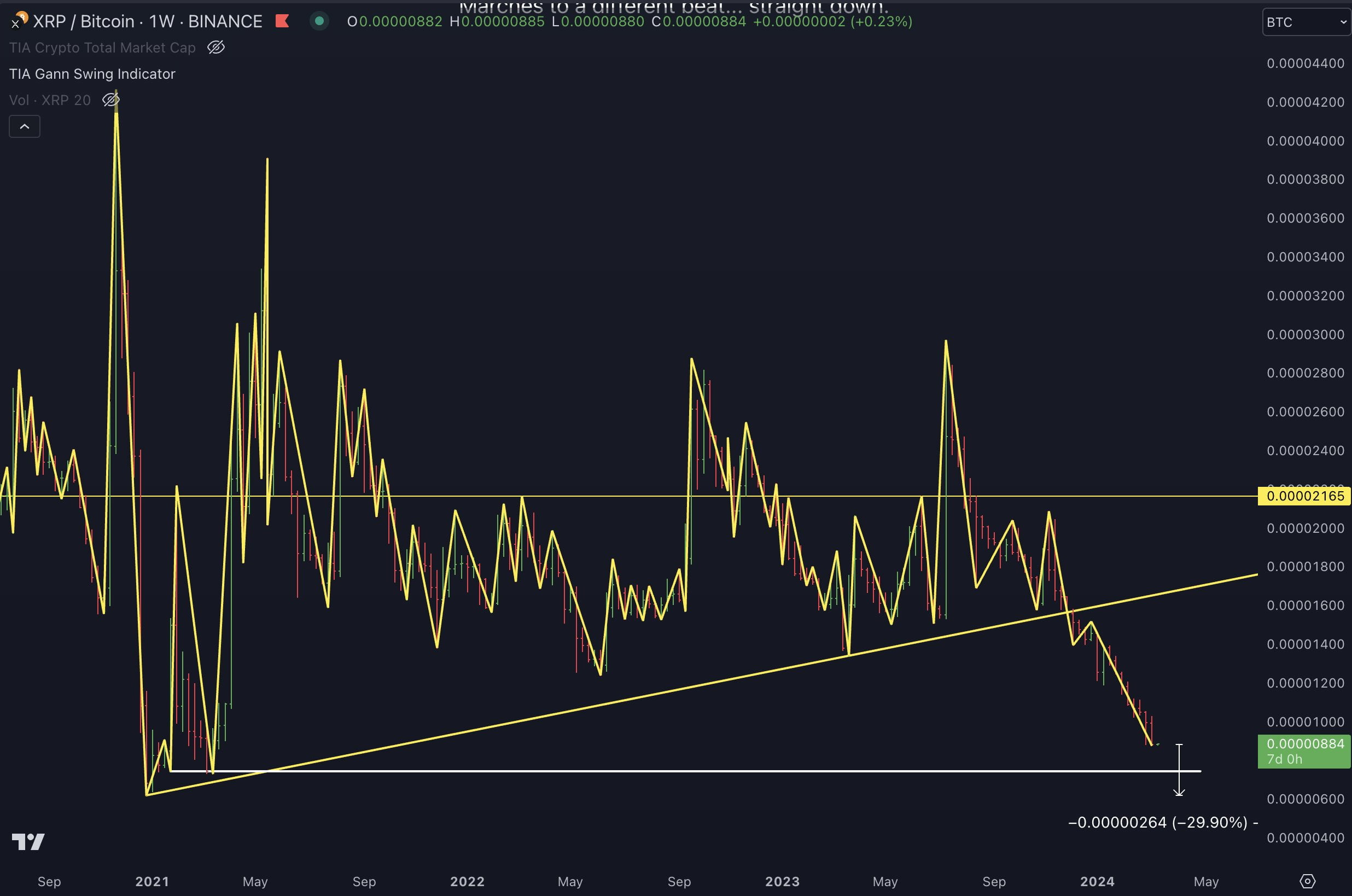The cryptocurrency market continues its upward trend led by Bitcoin (BTC), during which prominent crypto analyst Jason Pizzino shed light on the long-standing low performance of Ripple‘s payment platform XRP over the past six years. The analyst warned that this low performance in the altcoin could continue.
Forecast of Continued Underperformance
Analyst Pizzino, who has a significant following on social media, recently shared his views on the weak performance of XRP since 2018, noting that many altcoin holders have faced negative returns.

Pizzino examined XRP’s performance against the significant benchmark of the crypto market, Bitcoin (BTC), and predicted that the altcoin’s decline could continue. He pointed out that the XRP/BTC trading pair has been in a consistent downtrend, expecting a drop of up to 30%. The analyst particularly emphasized that the ongoing legal battle with the United States Securities and Exchange Commission (SEC) since 2020 has hindered the altcoin’s ability to regain value.
While the XRP/BTC trading pair was trading at 0.00000982 BTC ($0.70) at the time this article was written, Pizzino pointed to the significant distance XRP needs to cover to reach its previous highs against Bitcoin. The analyst mentioned that even significant price increases might not be enough for the altcoin to overcome its historical losses against Bitcoin, highlighting the substantial percentage increase needed for XRP to match Bitcoin’s 2017 peak value.
Challenges Blocking XRP’s Upward Price Movement
Pizzino warned that despite the short-term rally potential during the current bull market cycle, several obstacles for XRP surpass upward price movements. He shed light on the risks associated with investing in XRP, pointing to the uncertain regulatory environment and the potential for more legal issues in the future.
Pizzino’s analysis serves as a serious reminder for investors interested in XRP to be cautious and emphasizes the importance of thorough research before making investment decisions. The analyst stressed the need for transparency and clarity in the cryptocurrency market, advising investors to rely on data, charts, and facts rather than speculative estimates or influential endorsements.










